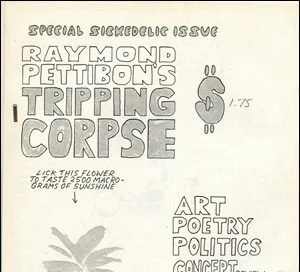This is part one of a two-part post about The Möbius Book by Catherine Lacey. Part two is something different.
Catherine Lacey is a novelist. Her body of work, which spans from her first novel Nobody Is Ever Missing to her fifth, The Möbius Book, demonstrates this fact irrefutably. Her contributions to the form range from elevated speculative narratives like The Answers and Biography of X to more controlled, straightforward affairs like the most recent. The Möbius Book is a Lacey novel through and through, with some of her most precise writing on the micro and macro levels to show for it. However, in the shadows of these other works, which announce their ambitions merely by stating their premises, The Möbius Book lands as a slighter, more casual effort. It’s a very good book, but as one reads it, one is aware that something is always missing.
At a practically emaciated ninety pages, The Möbius Book offers little on the surface that justifies its metaphysically provocative title. The action of the novel concerns Edie and Marie, two friends of near-middle age trying to support each other in the aftermath of their recent breakups. Marie was married with twins when her wife discovered that she had been entertaining a self-destructive emotional affair and left her. Edie moved away to live with an abusive photographer and professor, and has only just recently extricated herself from the relationship. At Marie’s apartment, the two drink tea, rehash their recent pasts, ponder the mysteries of faith, and try not to get distracted by a series of slightly absurd happenings carrying on just beyond the apartment’s walls.
Lacey hints at the reflexive nature of the möbius strip with a series of metafictional touches. Marie snaps at Edie that “You don’t have to get philosophical about everything that happens to you. Not everything’s a sign.” Later, she reflects that “It’s so strange when life looks like the movies, how hard it is to live instead of act at times like that.” Both Edie and Marie, at different times, find themselves channeling others, Edie her controlling boyfriend, and Marie “a ghost inside of her” that indulges compulsions without her awareness. Artifice and the absence of agency recur as either bugs or features of a reality both composed and experienced. There are also the two women, Marie’s twins, two ex-boyfriends of Edie’s, two flies flailing in “what looks like rape” on the arm of a chair; doubles all the way down throughout an otherwise sparse but expanded fictive dreamspace.
These devices have been common in American fiction at least since World War II. Lacey’s novel wields them deftly, but does not make them new. The book’s stripped down prose is indicative not of Lacey’s evolution as a writer but of a heavy editorial hand. Short, individual sections draw lines around longer sentences, editing maximalism down to minimalism so the book observes its own boundaries rather than letting these more intellectual conceits carry it away. The consequence of this stripping down is the reader’s awareness that there is more between the lines, even the words themselves, than appears on the page. Some of the atmosphere of the mystery novel is detectable, but not enough to justify a lingering sense that Lacey is hiding something else from the reader, some context for the story without which we’re stuck at sea.
This, ultimately, emerges as the referent for the novel’s most persistent image: a puddle of blood leaking out from under the door of the apartment across the hall from Marie’s. Eventually the door opens and the bleeding body is carried through it, but by then the blood has become more of a character than its vessel. One does not need to read far into this cleanly but thinly executed novel to know why the blood is there. There is an elephant bleeding into the room. The book has murdered its own twin, the book not written that haunts its pages like the ghost of a lost lover or an abandoned, better life. “There is no story that does not lead to another story,” Edie thinks toward the end of the book. Lacey must know so to say so; maybe the story that completes this one is forthcoming. For now, readers of The Möbius Book are still waiting.




